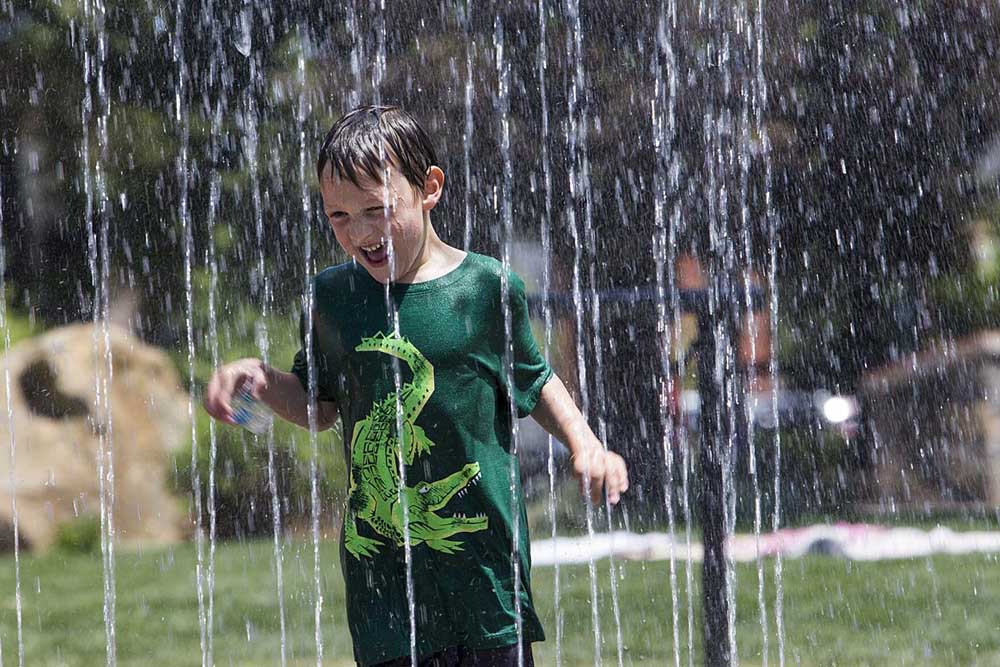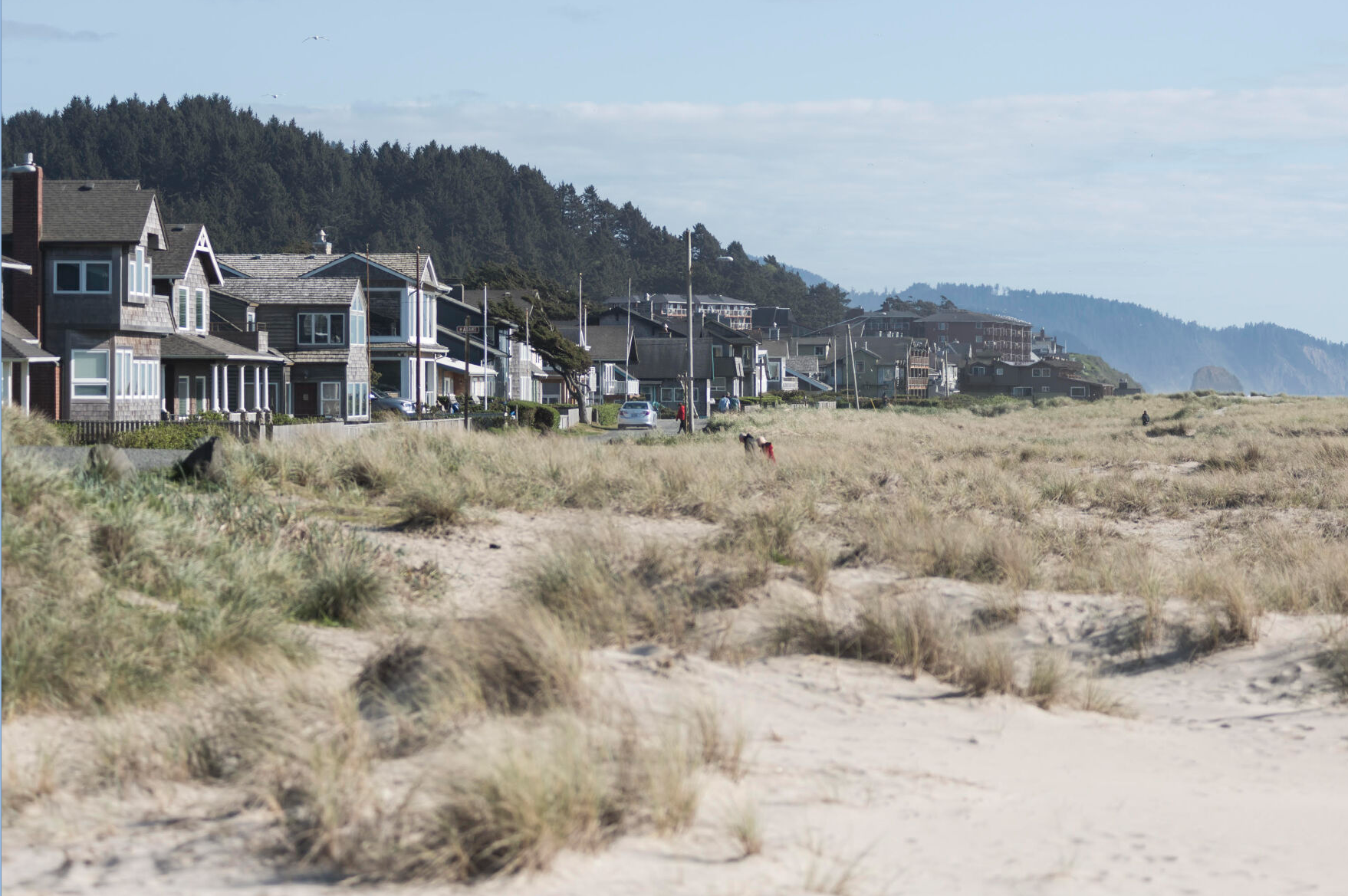Our View: A big gulp of things to come
Published 12:30 am Thursday, July 15, 2021

- People searched for creative ways to cool off during the record heat wave in June.
June’s genuinely shocking heat wave wasn’t by itself proof of global warming, any more than one Texas blizzard disproves it. Single events are weather, not climate. And weather is perfectly capable of being extreme, even without we humans pumping our atmosphere and ocean full of greenhouse gases.
Trending
That being said, there is near universal agreement among normally argumentative scientists that heating up Earth’s thin protective layer of atmosphere is an accelerating catastrophe. They also agree that human-generated heat pollution made the Pacific Northwest’s punishing heat dome a bit worse than it would otherwise have been.
Overall, our region’s summers are three degrees warmer on average now than they were in the 1920s. This might not sound like much, but additional heat punching into the West year after year after year is enough to sometimes tip us into deadly wildfires, droughts and heat. Eight hundred and still counting is this heatwave’s suspected death toll.
We can’t take comfort in assertions that such disasters are only “once in a century” or “every 1,000 years.” This summer has only started. More heat certainly lies ahead. Only in October will we know whether we’ve escaped additional roasting emergencies. One epic heat wave doesn’t say anything about global warming. But two in one summer would certainly ramp up concerns. Even another next year or five years from now will start to feel like compelling evidence that time is running out for us to get ahead of the runaway climate train.
Trending
Think of the climate as a bell curve, Texas Tech University professor Katharine Hayhoe told the Washington Post, with temperatures distributed according to how common they ought to be. The center of the bell curve may have shifted just three degrees, but the area of the curve now in the extreme zone has increased significantly. A 2017 study published in Science Advances found a 150% increase in deadly heat waves for every nine-tenths of a degree increase in the Fahrenheit temperature.
We can’t count on Earth’s climate changing in predictable ways. In a system of such gargantuan complexity, there are sure to be factors and feedback loops we don’t currently understand. It would be nice to think that maybe some benefits will accrue from our accidental tinkering with the air. For the most part in the past 30 years, the Northwest coast certainly is trending toward weather that can be considered “nice.” It’s been years since we had a good old 80-inch winter — something we may come to regret if saltwater begins intruding into our rain-recharged coastal aquifers.
For the nation and planet as a whole, the coming surprises are more likely to be unpleasant than welcome.
Besides contributing to the premature deaths of vulnerable people, one of the heat wave’s unwelcome — and unforeseen — consequences was rapid widespread damage to heat-sensitive vegetation. Tender young conifer shoots, landscaping plants, ferns and untold other species came out of those extraordinarily hot days looking in some cases like they had been singed all over by blowtorches. Some damage is likely to be transitory or only cosmetic. However, added to dry recent summers, many trees will be even more susceptible to insect invaders and diseases.
Other harm isn’t immediately apparent but is nevertheless consequential. Some local tidal flats, creeks and ponds are likely to have become hot enough to hurt aquatic life, which in turn normally feeds many creatures further up the food chain. The potential for wildfires has increased throughout the region. Conditions were so hot in some places that asphalt surfaces melted into sticky goo, raising the specter of expensive repairs and toxic runoff. Other heat and drying impacts are bound to emerge. The U.S. Drought Monitor found that more than 93% of the West is in moderate to severe drought.
Even in America’s herky-jerky back-and-forth political system, such dangers will certainly mandate a transformation in how we live our lives. All partisan politics aside, pragmatic reality will dictate shifts in everything from how we heat and cool our homes to how much we can continue to rely on fossil-fueled vehicles. The sooner we commit to adapting to such actions, the less unpleasant and costly they are likely to be.
Beyond this, we must all look at our life situations and alter the course of coastal living. This may entail finding heat-tolerant shade trees that can also put up with wet winters. Landowners will be under an increasing obligation to maintain cool stream buffers. As our cars and trucks reach obsolescence, switching to electric will become both necessary and more feasible as the technology improves. Ductless heat pumps, thermal-pane windows, better home insulation and solar panels are all available right now, sometimes with significant tax incentives. There is much we can do.
The heat wave was a big gulp of things to come, even if it can’t be convincingly pinned on climate change. Imagine future summers when such events are common. Act accordingly.









